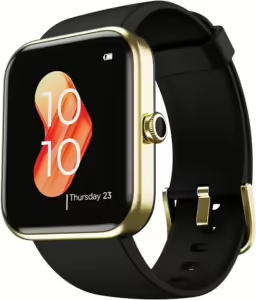The wearables market began 2024 with a robust expansion, as global shipments of wearable devices grew by 8.8% year-over-year in the first quarter (1Q24), totaling 113.1 million units, according to the IDC. Despite this increase, average selling prices (ASPs) declined for the fifth consecutive quarter, dropping 11% in 1Q24, influenced by the rise of emerging markets and economic pressures on consumer spending.
| Company | 1Q24 Shipments (in millions) | 1Q24 Market Share | 1Q23 Shipments (in millions) | 1Q23 Market Share | Year-Over-Year Growth |
|---|---|---|---|---|---|
| Apple | 20.6 | 18.2% | 25.4 | 24.5% | -18.9% |
| Xiaomi | 11.8 | 10.5% | 8.2 | 7.9% | 43.4% |
| Huawei | 10.9 | 9.6% | 6.3 | 6.1% | 72.4% |
| Samsung | 10.6 | 9.3% | 9.4 | 9.0% | 13.0% |
| Imagine Marketing | 6.1 | 5.4% | 6.4 | 6.2% | -4.8% |
| Others | 53.1 | 46.9% | 48.2 | 46.4% | 10.1% |
| Total | 113.1 | 100.0% | 104.0 | 100.0% | 8.8% |
IDC noted that the lack of significant innovation in the premium segment has enabled second-tier brands to close the gap. Until new sensors or algorithms offer prescriptive insights or track new data points like blood pressure or glucose, consumers are expected to gravitate towards mid-range and value price points. Brands have responded by broadening their pricing strategies.
Smaller, regional vendors, especially in emerging markets where premium brand prices are often prohibitive, played a significant part in market dynamics. It has created opportunities for local brands to introduce affordable, feature-rich devices. Companies like Xiaomi and Imagine Marketing have thus managed to secure top positions globally.
Company Highlights
| Company | Highlights |
|---|---|
| Apple | Maintained top position despite macroeconomic challenges, a temporary ban on certain watch models, and no new AirPods. Watch shipments declined 19.1% year-over-year, and hearables, including AirPods and Beats, fell 18.8%. |
| Xiaomi | Ranked second with 43.4% year-over-year growth, benefiting from a 16% decline in 1Q23. Value-oriented products and re-entry into Wear OS boosted overall smartwatch ASPs. |
| Huawei | Climbed to third place, surpassing Samsung, driven by a resurgent smartphone business which boosted wearables through bundling. However, 75% of sales are concentrated in China. |
| Samsung | Dropped to fourth place. The Galaxy Fit 3 launch and success with lower-priced hearables led to strong growth, though core smartwatch volume declined 5.1%. |
| Imagine Marketing (boAt) | Finished in fifth place. The Indian brand grew hearables volume by 17.5%, but smartwatches saw a 61.3% decline due to intense domestic competition. |

